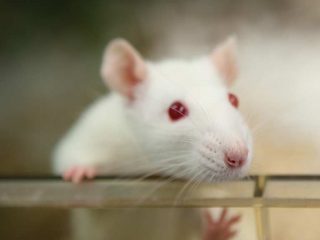The most up-to-date data currently available on the use of animals in research and testing in the UK, and the EU, was published on 15 July 2021. This information is important for openness and transparency and can also help to focus 3Rs efforts more effectively. Below is a summary of the data relating to the number of animals reported to have experienced ‘severe’ suffering, and in which areas of science.
The mouse is the species most likely to experience ‘severe’ pain, suffering, distress or lasting harm. In both the UK and EU, batch potency testing of vaccines and other substances (such as botulinum toxin) for quality control purposes is the category responsible for the most uses of animals reported as ‘severe’.
UK
Data for 2020
Source: Home Office. See Tables 3.1 and 3.2 of the Data Tables associated with the Statistics of scientific procedures on living animals, Great Britain 2020 – published 15 July 2021.
Summary
58,499 experimental procedures using animals (4% of the total) were reported as causing ‘severe’ pain, suffering, distress or lasting harm.
44,093 – for regulatory purposes (9% of all use for regulatory purposes was ‘severe’)
10,867 – in basic research
3,511 – in applied research
Main categories of research and testing involving severe suffering
(data shown represent the number of ‘procedures’ undertaken that were reported as causing ‘severe’ suffering)
35,997 – Batch potency testing (represents 61.5% of all experimental procedures involving animals that were ‘severe’)
2,592 – Nervous system
2,567 – Immune system
1,512 – Human infectious disorders
1,479 – Batch safety testing
1,303 – Oncology
Which animals experienced the most ‘severe’ suffering?
(data shown represent the number of ‘procedures’ undertaken involving those animals)
50,136 – Mice (6.1% of all mouse use was ‘severe’)
1,136 – Rats
1,553 – Guinea pigs (25.6% of all guinea pig use was ‘severe’)
4,826 – Fish
What about for the creation and maintenance of genetically altered animals?
In addition, 27,896 (1.9%) of the procedures involved in the creation of new lines, and maintenance of established lines, of genetically altered animals (not used in experimental procedures) were categorised as ‘severe’.
EU and Norway
Data for 2018
Source: European Commission. Summary Report on the statistics on the use of animals for scientific purposes in the Member States of the European Union and Norway in 2018 – published 15 July 2021.
NB. data for this period includes Norway for the first time, and also that for the UK who was still a member of the EU for that reporting period. EU data can also be viewed via the Commission’s ALURES database.
Summary
1,064,925 uses of animals (10% of the total) were reported as causing ‘severe’ pain, suffering, distress or lasting harm.
346,113 – uses in applied research
(11.7% of all uses for applied research involved severe suffering)
336,521 – uses for regulatory purposes
(17.4% of all uses for ‘regulatory’ purposes involved severe suffering)
310,571 – uses in basic research
(6.2% of all uses for basic research involved severe suffering)
Main categories of use involving severe suffering
(data shown represent the number of uses of animals in that category that were reported as causing ‘severe’ suffering)
253,764 – Batch potency testing (represents 23.8% of all uses of animals that were ‘severe’)
124,739 – Animal diseases and disorders (represents 11.7% of all uses of animals that were ‘severe’)
NB. the inclusion of Norway’s data sees a 340% increase in this category compared to previous years, largely linked to the undertaking in that country of studies relating to farmed and wild fish
90,288 – Nervous system (represents 8.5% of all uses of animals that were ‘severe’)
69,536 – Immune system (represents 6.5% of all uses of animals that were ‘severe’)
61,114 – Diagnosis of diseases (represents 5.7% of all uses of animals that were ‘severe’)
52,177 – Oncology (represents 4.9% of all uses of animals that were ‘severe’)
Which types of use were most likely to be severe?
The production of monoclonal antibodies by the ascites method was the most likely (94%) to cause ‘severe’ suffering. This method was still being used in 6 Member States – principally in France where around 53,000 out of 54,941 uses in this category took place. Note – alternative approaches are available to replace the mouse ascites method, and this method has not been used in the UK since 2012.
Severe suffering was seen in 41% of animals used for the diagnosis of diseases, and in 38% of the animals involved in acute toxicity studies in the area of ecotoxicity.
Which animals experienced the most ‘severe’ suffering?
(data shown represent the number of uses of those animals that were reported as involving severe suffering)
732,860 – Mice (13.1% of all mouse uses involved ‘severe’ suffering)
191,796 – Fish other than zebrafish
62,171 – Rats
25,150 – Zebrafish
17,534 – Guinea pigs (13.4% of all guinea pig uses involved ‘severe’ suffering)
3,922 – Amphibians other than Rana or Xenopus (50.2% of all ‘other’ amphibian uses involved ‘severe’ suffering)
2,482 – Syrian hamsters (22.7% of all Syrian hamster uses involved ‘severe’ suffering)
What about for the creation and maintenance of genetically altered animals?
7,653 uses of animals for the creation of new genetically altered lines (1.3% of uses in this category) and 52,256 uses of animals for the maintenance of established lines of genetically altered animals (5.6% of uses in this category) were categorised as ‘severe’.
NB. Where animals are found dead with no clear reason, this results in reporting these as ‘severe’.
Note
It is not easily possible to make direct comparisons of severity data across Member States as the numbers, and proportions of animals falling into this category, are heavily influenced by the type of research and testing undertaken in that country. For example, a Member State with a high proportion of its animal use in the category of regulatory testing is currently likely to have a higher proportion of animal use causing ‘severe’ suffering.
